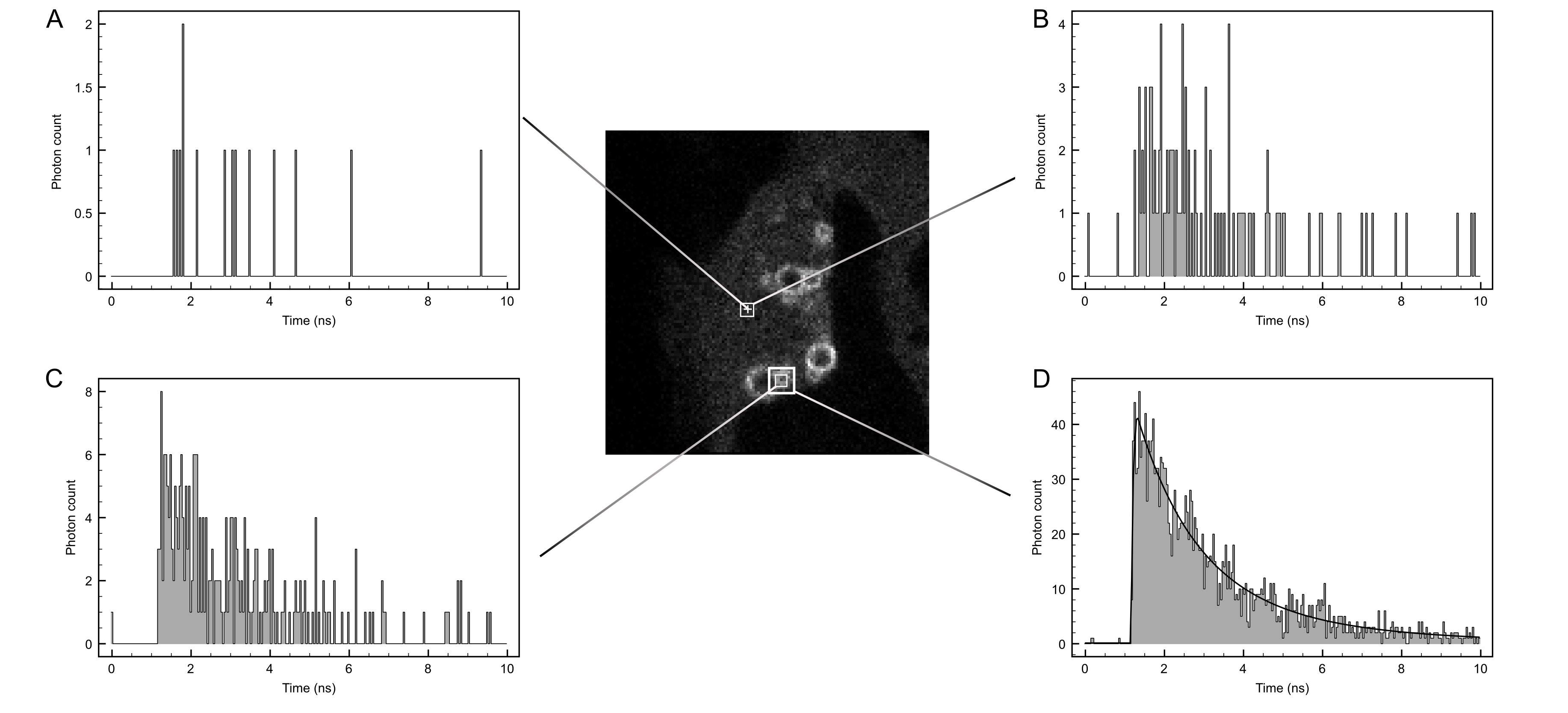Section: New Results
Lifetime estimation in photon counting-based fluorescence lifetime imaging microscopy
Participants : Philippe Roudot, Charles Kervrann.
In this study, we investigated a Maximum Likelihood (ML) framework for photon counting-based fluorescence lifetime estimation in Fluorescence Lifetime Imaging Microscopy (FLIM). Data collected at a given pixel consist of photon counts exponentially decreasing along the time and are assumed to follow Poisson statistics (see Fig. 6 ). A careful analysis of the biophysical phenomenon and instrument models are used to derive a proper ML framework for lifetime estimation. Unlike usual pointwise approaches, a neighborhood-wise approach is proposed to take explicitly into account the spatial correlation of data [15] . The application to real biological data allowed us to prove the spatial localisation of interactions, a new result which was not achievable with conventional methods. For future work, the main challenge is to extend the framework to deal with multi-exponential decay estimate and adaptive neighborhoods, a challenge we need to address for a large class of biological studies.
Reference: [15]
Partners: A. Chessel (University of Cambridge, UK), F. Waharte and J. Boulanger (UMR 144, PICT IBiSA, CNRS-Institut Curie)
|



